Nella Lush, painter, and Steve Lush, painter and sculptor: part 1
How they influence each other’s art, Steve’s newfound passion for sculpting, and what’s underneath a few of Nella’s paintings
The story of Nella and Steve Lush is a love story. Love for each other, for making compelling and meaningful art, for family, for the ocean, for Italy, and for their pug Agatha.
Their story is also about artistic freedom. For Steve, that freedom has meant moving beyond extraordinary watercolor painting and making art in different styles and mediums—with a current focus on sculpture—without much concern that anyone likes it other than Nella. For Nella, it means working on large canvases, letting ideas and emotions flow through her, and tapping into a childlike sense of spontaneity—without the limitations of being representative or precise—to create beautiful pieces.
For many years, I’ve admired Nella Lush’s expansive (36” x 36” and larger) and highly textured landscapes that transport me to a beach and stimulate emotions and physical memories. My husband and I admired Steve Lush’s watercolors of ships that have an ethereal quality unlike any ship paintings we’d seen before. Subsequently, we started noticing that when we liked a particular painting hanging at North Shore Arts or Rockport Art Association and Museum, it was often Steve’s. However, it was not in his familiar style or a watercolor. I became curious about how this artist couple worked, how they influenced each other’s art, and what sparked Steve’s journey into oil painting, collage, and metal sculpture.
Their story began nearly 50 years ago. Steve was working as an engineer on a freighter docked in Brindisi, Italy.

One day he spotted a beautiful red-haired woman who was serving as a translator for shippers. After a few days of observing her arrivals and departures and on the eve of his ship leaving port, he invited her out for a drink. She initially said he could only walk her to the bus stop, but then she agreed to a drink, which was a beer for him and a glass of warm milk with honey for her. That fortuitous night led to letter writing, long-distance phone calls, a romantic meeting in Canada, and eventually marriage, now in its 48th year. They lived in Spain and then in 1983 moved to the US where they raised their three children, sailed their high-maintenance (i.e., money pit) 1954 Crosby catboat, and progressed on their artistic journeys.
Today, they do much of their work in their home studios, which for Nella is an airy room on the second floor of their house. It’s filled with large canvases, lots of paint, cold wax, saltshakers of marble dust, and big brushes and tools for applying swaths of paint. It also houses many of her very healthy plants that come inside for the winter. Steve is sculpting in the garage while maintaining his painting studio in the basement. Their home is a beautiful showcase for their paintings and sculptures.
Steve and Nella also have a studio in Boston’s SOWA arts district, and you can drop in the first Friday of the month and some Sundays to chat and see their work comingled.
Steve will have a solo show December 10-31, 2022, at the Rockport Art Association in Rockport, MA, and Nella will have a solo show at the Robert Lehman Art Center at the Brooks School, North Andover, MA, January 4-30, 2023.
You both grew up in artistic families. Do you think art sense and talent is genetic or a product of one’s environment? Do any of your children make art?
NELLA: I believe art can be both genetic and motivated and shaped by one’s environment. Children are like little sponges and they absorb so much. If a child is exposed to art from an early age, it will come naturally because they create all the time, even if they don’t have artistic parents. Our children didn’t have many toys. We always provided them with paints, and paper, and sports equipment.
STEVE: Our daughter is a two-dimensional artist and she makes textile art. She’s very good.
Tell me about how you influence each other artistically. Has that always been part of your creative lives?
STEVE: We ask each other for comments. We work in separate spaces and she will ask me to come and look at something and I will ask her about a sculpture. We give each other constructive criticism.
NELLA: It takes some strength to resist criticism and not to change things. Sometimes he says, “I think you should leave it like that,” but inside of me I feel like it’s not right. I feel that I haven’t put as much into the painting as I wanted to put in. There’s some double guessing, and I tell him I have to make my decision and thank you for your input. [She smiles with affection rather than annoyance.]
STEVE: We have immediate in-depth feedback, maybe too much. But, it’s more helpful than detrimental.
How much influence have you had on each other’s style?
STEVE: A lot. Everything really for us is that way.
NELLA: Are you are saying influence or inspiration?
Influence. Do you ever move in a certain direction and does Steve go in that direction but in his own way, or vice-versa?
STEVE: Yes. We’ve had a couple of dual two-person shows. People who don’t know us would say, “I can’t imagine how these two artist’s styles would go together,” but guess what, when you put them together—and she knows how to hang and arrange art—they look great. The two-person show we had at North Shore Arts several years ago looked very nice. People said, “we never thought your styles would complement each other and now we see it.”
We create in different spots [in their home studios]. We are not looking at each other’s work as we are actively painting, but we see the art in stages of development.
What if you both started paintings and then you swapped. What would happen?
STEVE: We’ve done that!
How did it go?
STEVE: It goes really well [they both laugh].
NELLA: One of the paintings I just finished is one of Steve’s canvases he didn’t want anymore. He told me to go over it, so I did [more laughing].
STEVE: It had built-in texture. [Yes, Steve’s work was completely painted over.]
NELLA: I love painting on recycled canvases because it takes a little less work to build up the texture.
STEVE: When I have one of my paintings I’ve decided not to show, and I can’t find a storage spot, I think why not give it to Nella to transform it?
NELLA: I showed the painting to my gallery in Nantucket and the owner said, “Nella, that’s your best abstract so far.” It’s Steve’s work underneath it! [they both laugh again].
STEVE: If you x-rayed it, you would see my work underneath.
Steve, your art education was primarily from your mother. There are debates about the merits of art school. What is your thought on your art path—was it better that you had limited, familial training?
STEVE: For me it was definitely better. People going to art school and the work they can generate coming out of it, some of it is very good. But the problem is that it can be inhibiting when the artist starts thinking that’s not right, you’re not supposed to do that, it’s not what we learned. I come from the other direction.
I don’t care what people think. I do what I want, and I learn by making mistakes. For me it was perfect not going to art school. But I read a lot. My mother was a legitimate full-time artist and she was knowledgeable about drawing, composition, and perspective and she taught me about those things over the years. One thing I can do very well is draw. I owe that to my mother. That served me very well for marine art and what I was doing in watercolor.
You took up marine art and learned watercolor on your own. Was that a challenging period?
STEVE: At one point I was a full-time model shipbuilder when I was not working full-time as a mechanical engineer. I was always holding hulls in my hands and I knew how ships were constructed but I wanted to learn watercolor painting. That’s an extremely difficult thing to learn on your own, and I did. Some of my early pieces, for maybe the first five years, were static and tight and not free at all. The more watercolor work I did, and the more marine work I did, it loosened up.
That sounds challenging that it took you five years to master watercolor.
STEVE: I would say that it took me five years to get loose and 10 years to master. It was a while. I was doing watercolor work for at least 20 years.
Steve, you’ve created art in so many different mediums and styles. Can you talk about that path? Did you get to a point when you wanted to stop doing watercolors and do oils?
STEVE: Yes, then I would bounce back and do watercolors again. It was like cross training. I was doing oils because Nella was doing oils. I liked the way they looked and thought I’m going to try that. I ended up doing marine art and abstract work in oil, watercolor, and pastel. But, I eventually got tired of that.
I was reading about the German collage artist Kurt Schwitters from the World War II era. I found the subject really intriguing and I got involved in collage and did that through the pandemic. I made around 80 collages. Piecing those together informs what I’m doing now in welding. I draw a lot of what I do now from my collage work.
While I’m doing all this, my work is in two galleries, and they are not pressuring me so I’m exploring and doing my own things. Right now, I love doing sculpture. I don’t see myself veering away from it too soon. There’s plenty of challenge in it.

What do you like about sculpture?
NELLA: I’m watching him do the metal work, and he is doing it in the same way I’m doing my abstract work, with no preconceived idea. He discovered abstract. I kept telling him, don’t think too much, because he was thinking too much before when he was painting.
STEVE: With sculpture, you have to see through it to be able to see the sky, or something like a window or a nice light. Just like a painting where you work with positive and negative space, you have to think about the negative space around and within a sculpture. I can piece together something on the floor in the garage with the scale of the pieces I’m creating. It’s like a collage. When I start to weld it in an upright position, I can change the angle of things so that originally flat pieces become more three-dimensional. I’ll saw or grind some pieces to make the shape. There’s no set thing. I’m winging it.
Is that how you’ve approached your more recent paintings, and if so, is that a departure from your watercolors?
STEVE: Yes, definitely. The marine work is so structured and I did some landscapes and cityscapes, all very structured. Then I really leaned toward cityscapes that are very abstract and Ashcan-like.
There’s really no style of art that I dislike. Spray painting, I don’t care for too much, but I do like graffiti art. There are many things I like and at any given moment I could try something different in any medium.
NELLA: Do you like realism?
STEVE: I like realism to an extent. With a realistic painting, I want to see that the artist has capitalized on either a strong contrast or diverse color combination that makes the colors really strong, and the light and shade really strong. I don’t care about technically rendered landscapes with the perfect mountain and the nice skies. To me it’s boring.
NELLA: And you like industrial.
STEVE: Yes, I like industrial.
You made the comment that you are letting your sculptures rust.
STEVE: The ones you see with big-time rust, I want them that way. I like it. I’m not going to last 2,000 years and I’m not building them to last 2,000 years. If someone wants one and wants it to last a long time, they are going to have to sandblast it and coat it.
Behind the Weather looks like one of your paintings.
STEVE: This one is a drawing in steel.
Did you sketch it first?
STEVE: I had all the pieces laid out on the garage floor. I liked the shape of the cloud so I ended up welding that. That cloud is made from 12 pieces that used to be a wrought-iron chair [he gives to new life to discarded items in his sculptures, often using scrap he finds or is given]. I cut the pieces I liked and I butt welded them. Then, I built everything in between so it’s self-supporting, and finally built the base. I didn’t start with a design.
That square piece with the square holes, that is the expendable part of a snowplow blade. That’s the part that gets ruined. It’s basically a 1”-thick piece of steel that was in a scrap pile.
Your watercolor marine art shows the grittier side of vessels. Some of your sculptures are rusted. Are you more drawn to that grittier side?
STEVE: Yes. Have you heard of Erik Ronnberg, the ship model artist? He worked at Cape Ann Museum. His work is beautiful, but perfect. There’s another artist, August Crabtree, and his models are at the Mariners’ Museum in Newport News, VA. If you look at his models, you can see the grime that would accumulate in the scuppers on deck and the rusted paint where the handrail was rubbed because people used it all the time. That is what I strove for when I was making my models. They were not pristine. Not to take away from Erik’s work, but the style of August Crabtree is the kind of model shipbuilding that I love.
What are you listening to when you are painting or laying out your sculptures?
STEVE: I’ll put on Steve Gunn, a folk rock songwriter, or The Sadies, which my son turned me onto.
NELLA: I listen to Italian music [they both laugh at this]. I listen to Italian music and music from the 1970s.
Why is this making you laugh?
STEVE: I will listen to Steve Gunn and then walk upstairs to see what’s she doing [laughs more] and she’s playing Italian music [both laughing].
NELLA: You find that really funny. I listen to Italian classical, and I love Bob Dylan, Joni Mitchell, and some Nina Simone.
Steve, I’ve heard you say several times, “I don’t care.” I’ve heard other people say it, and some of them mean it and some say the exact opposite. Do you truly not care?
STEVE: As long as Nella likes it, that’s all I care about. If she likes it, then I know it’s good. If somebody sees it and they don’t like it, I don’t care. This is my test right here [points to Nella].
In a cause-effect world, was there a cause that let you say, I’m done with watercolor?
STEVE: Watercolors in general are a tough sell. You can have the best watercolors and you have to put them on a mat and under glass, and add a frame.
NELLA: It’s expensive.
STEVE: I got tired of doing so much work in watercolor and becoming a signature member of a watercolor society. Doing all the things that watercolor artists do including lots of demos, but finding that watercolors are a low-level sell. People just don’t buy them the same way they buy oils. I thought why don’t I just take my energy and do something else?
Nella, you’ve done a lot to elevate the perception of abstract art in the Cape Ann art community and encouraged abstract artists to participate in the community with the Rockport Art Association Experimental Group. What has happened as a result of that?
NELLA: The Experimental Group artists have more of a voice because of the monthly meetings we have. Listening to other artists and talking about their own struggles and issues is helpful. When other people validate what you are doing, it helps you feel like you are not alone. The group participants feel encouraged to keep going.
The second part of this interview is here. In it, you can find out about Nella’s move from representational to abstract painting, how her cooking and art approach are similar, their dream museum shows, what dictates art prices, and so much more!
Where to find Nella and Steve Lush (and you should!)
www.nellalush.com and www.mymarineimpressions.com
www.stevenlush.com
Their SOWA gallery at 450 Harrison Ave, #227, Boston, on the first Friday of the month
Rockport Art Association and North Shore Arts
Their work is in these galleries:
Steve:
Cortile Gallery, 230 Commercial St, Provincetown, MA
The Gallery at Four India, 4 India St 2nd Floor, Nantucket, MA
Nella:
Cortile Gallery, 230 Commercial St, Provincetown, MA
The White Room Gallery, 2415 Main St, Bridgehampton, NY
Thomas Henry, 15 Centre Street, Nantucket, MA and Cornwall, UK

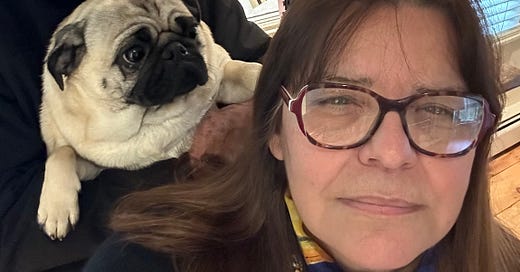





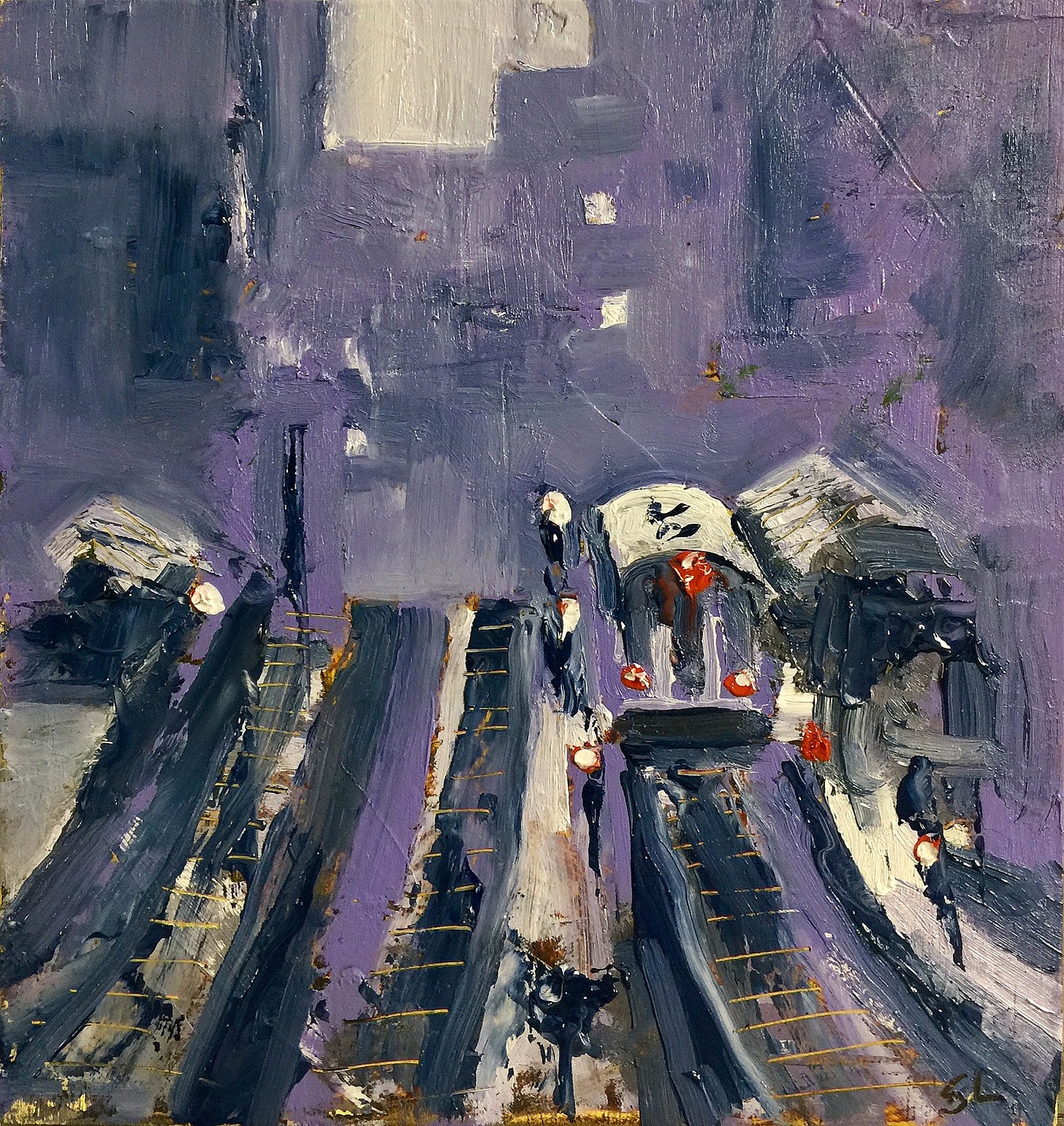
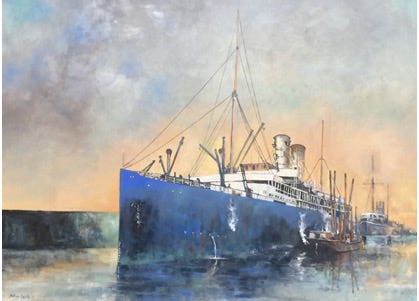



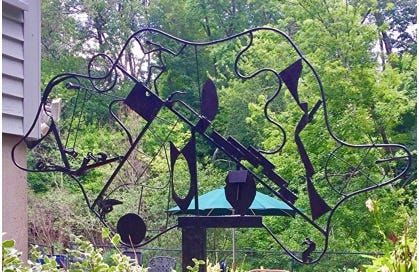
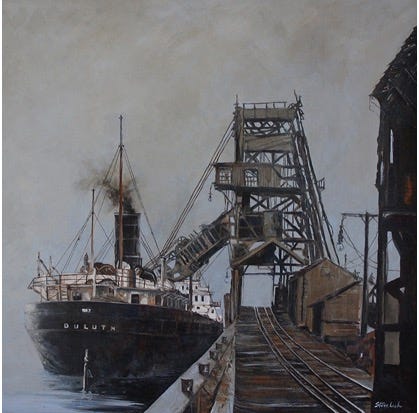
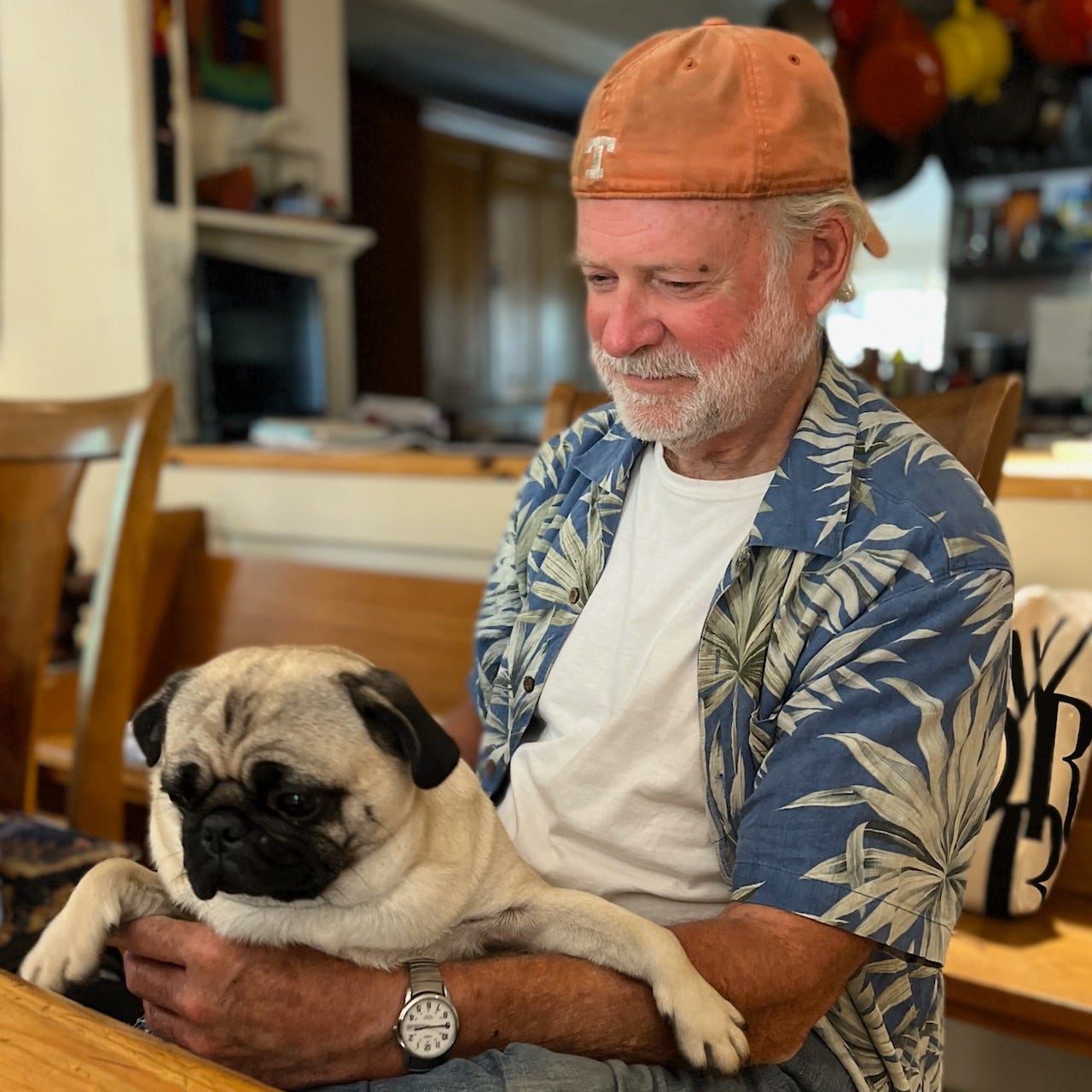
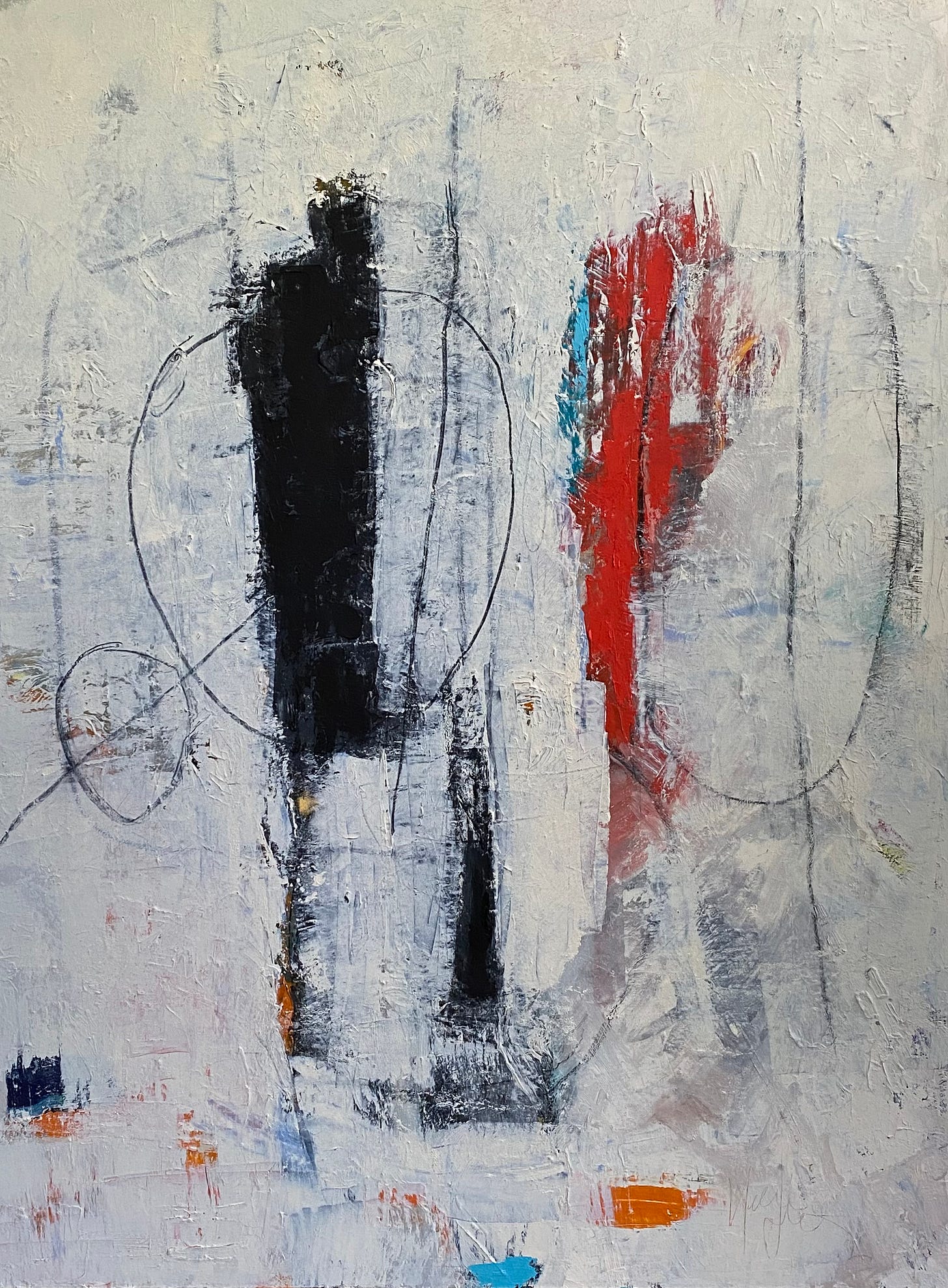
Wonderful Interview Nella and Steve .
You are both an inspiration to me .
Thank you for sharing .. JM
What a wonderful love story about a Reading MA boy and the Puglia Italy girl whose paths crossed by chance (???) and look at all the beauty that came from that. (And a lovely sweet and generous couple too🧡)